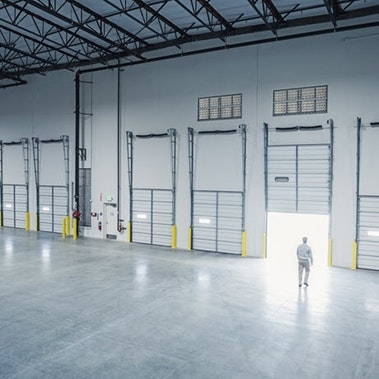This article was first published on March 12, 2020, and was updated on March 24, 2020 to reflect the latest information from China, Italy, Spain, and other geographies. In many geographies, the crisis has accelerated since this note was first published, but much of this advice is still relevant for all retailers. For those retailers who are relatively untouched by the crisis, this advice should act as a timely “call to arms” and help you quickly build an action plan.
As the number of cases of the Coronavirus (COVID-19) increases, the focus of companies must be on limiting the direct impact on employees and customers whilst supporting efforts to limit the spread of the virus. The healthcare sector, airlines, travel firms, and retailers are at the coalface of the immediate impact and face a huge challenge over the coming weeks to respond effectively to the emerging crisis.
In many countries retail is already a troubled sector, with declining consumer demand and the threat from online and discount models. The EU economy slowed in Q4 20191 and indicators such as consumer confidence in the EU dropped by five points between February and March 2020, dropping below the long-term average for the first time since 20152.
Against this backdrop retailers are already starting to see early impacts of COVID-19 as products shipped from China (and increasingly Europe) fail to arrive on time. As the outbreak becomes more widespread retailers face collapses in both supply and demand. Given the spread of the virus around the world, it’s unlikely that these will smoothly happen at the same time.
The question for retailers is whether they can flexibly respond to these diametrically opposed challenges in an agile way, adapting their operations and commercial decision making rapidly to reflect the new day-to-day reality
The question for retailers is whether they can flexibly respond to these diametrically opposed challenges in an agile way, adapting their operations and commercial decision making rapidly to reflect the new day-to-day reality. As the outbreak continues, our analysis shows that demand for many categories has plummeted, and supply from China has yet to return to the expected levels. Strong leadership will be needed, not just to steady the ship, but make the necessary decisions, cutting across traditional boundaries and thinking.
All retailers are working on their response to this challenge but, already facing material consumer headwinds and falling margins, it is not a stretch to imagine a situation where the players that are able to quickly adapt survive, with those unable to effectively react going out of business. We recommend all retailers take six actions immediately to navigate this challenging and unprecedented situation:
1. BE A FORCE FOR GOOD FOR YOUR CUSTOMERS
The coming weeks and months will be challenging for everyone, and as one of the cornerstones of people’s lives, retailers have a disproportionate role to play in reassuring customers and the broader community.
Retailers need to balance their financial needs against those of the role they play in their communities. For some of their customers, an open supermarket will provide them with reassurance that they’re not alone.
The lessons from China are that retailers can be a force for good. As communities are quarantined, retailers will play a hugely important role in feeding and protecting the local populations. This will need small changes to process and policies such as limiting sales of specific products or delivering other company’s products with their delivery drivers, ensuring that everyone gets what they need.
In an extreme situation, it could be necessary for retail competitors to work together to better serve their customers. We are seeing several different ways retailers could work together:
- Protect employees and customers’ health: Jointly imposing strict safety standards to reduce COVID-19 transmission.
- Coordinate pricing and suppliers: Sharing pricing and stock data to maximize the availability of essential products.
- Guarantee the supply: Defining rules to ensure the whole population is properly supplied, including coordinating store opening and closing (e.g. one retailer per region)
- Cooperate in logistics, especially if rationing is needed: Working side-by-side with public authorities and competitors to coordinate logistics and rationing
- Prioritize the service to vulnerable customers: Developing a joint strategy to serve vulnerable or limited mobility customers
Cross-retailer cooperation will make it hard for players to maximize their competitive advantages. However, cooperation serves a greater purpose: Protecting and safeguarding the health of the population, which we believe will lead to higher perceptions for these retailers once the crisis has abated.
2. SHIFT FROM BUSINESS CONTINUITY TO CRISIS MANAGEMENT
All retailers are revisiting their business continuity plans to reassure customers and colleagues manage the inevitable supply chain constraints and demand shocks by prioritizing critical business activities and creating contingency plans for disruption. This is well underway but will be insufficient if the situation continues to develop at the pace of recent weeks. Retailers must plan and build a flexible and nimble crisis management capability now, not when it becomes a necessity.
After the initial set of actions that business continuity plans prescribe, management need to steer their response based on the actual situation they face, which will evolve each day. The challenge is to adapt to ever-changing circumstances, where the right decisions on store operations, colleague management, logistics, and pricing will vary day-to-day. Existing reporting frameworks, management information tools, and annual or quarterly planning processes are unlikely to be sufficient to provide the necessary visibility, command, and control.
Build a "Control Tower"
It is critical that all retailers take a "Control Tower" approach, building a single point that contains all the key information and commands in decision making. Tailored scenario modeling and contingency planning to continuously "run the numbers" is needed, alongside rapid 80/20 decision making. Under this approach, we recommend creating a "Crisis Team" to manage the response. This team needs to include stakeholders from all critical departments, in order to ensure that any decision is taken, validated and implemented as soon as possible.
As an example, it will be key for retailers to decide each day which stores to keep open. In the face of supply constraints or low staff availability, it may be better to close some stores where the customers can be served by other stores (or in extreme cases by a competitor). This will only become more critical as staff are unable to work (particularly if the virus affects clusters in specific towns and cities) and customers are asked to stay at home.
We recommend that the "Crisis Team" includes members from the Management, Operations, Commercial (Offering and Pricing), Supply Chain and Human Resources teams. Other supporting functions must be highly involved in all relevant discussions (e.g. Finance to advance payments to suppliers to secure orders).
Be in contact with the ground
The "Crisis Team" needs to maintain real-time contact with stores to understand the challenges they are facing. There will be common challenges, but also local situations that need to be taken into account. We advise booking regular meetings with regional and/or store managers. For example, regional managers can gather stores’ feedback at night and share it the following day with the "Crisis Team" in a morning call. The "Crisis Team" will solve the challenges during the day.
In addition, the "Crisis Team" needs to stay in touch with the reality outside of the business. First, retailers must develop a close relationship with public authorities. In many cases, retailers will have to react to restrictions that directly impact their ability to serve customers. Appropriate lobbying of authorities (particularly through industry groups) can help mitigate the most damaging effects of the strictest rules while ensuring that public safety is maintained. For example, transportation restrictions and quarantine rules in Wuhan meant truck drivers from other regions needed to lock-down for 14 days. Retailers worked with local authorities on exceptions and agreements to deliver through other ground transportations systems, including military transportation in extreme cases.
Also, it is important to stay ahead of consumer trends. We recommend retailers devote specific teams to continue with customer trends analysis to understand how consumer demands are changing (e.g. social listening, surveys, or data analytics with recent transactional data). Large increases or decreases in category sales can have a large impact on the operations and the supply chain of any retailer. For example, increases in rice and pasta (as seen in China and elsewhere) means this category must be a priority over others.
Empower employees to make decisions
Although some degree of centralization is required to ensure a homogeneous response, we encourage retailers to empower employees on their "Crisis Teams" to make decisions by themselves, based on information from their teams, supported by general guidelines provided by the management and information from the ground. Chinese retailers found that empowering the line of directors below the management was critical to ensure decisions were taken and implemented without overwhelming management.
However, the decision-making process does need some controls in place, especially in two critical areas: pricing and promotions.
- It is critical for management to decide on the right pricing approach during the crisis. In general, we have seen that most retailers are not increasing prices in response to increased demand but are reducing their margins to better serve their customers. Pricing decisions require additional control layers to avoid mistakes. Increasing prices (by mistake, to manage margins given higher costs) can lead to extremely poor customer perception, widespread negative media coverage and fines from government, as has been seen in China.
- During the COVID-19 crisis, we recommend reducing or stopping promotions. Promotions complicate store operations, which are already challenged due to staff absenteeism, and put extra pressure on the supply chain, driving shortages of essential products. Moreover, restricted travel limits how much promotions can uplift sales and store traffic. We believe that the negative effects of stopping promotions can be mitigated through wide communication of the decision, including the reasons behind it, along with shifting the investment into regular prices.
Prioritize the most important products
As the COVID-19 outbreak evolves, retailers will need to prioritize essential products and their delivery. During the outbreak, customers expect to be able to buy the products they really need at a fair price with the highest quality. Given this, we recommend that retailers:
- Prioritize food quality and safety over merchandising, presentation, or store layout
- Maintain prices
- Focus on essential products (e.g. searching for substitute suppliers where required)
- Think in terms of customer needs (e.g. customer that are looking for pasta will buy any available brand)
- Adjust layouts to reflect the newly reduced assortment
- Switch-off categories / activities that complicate operations (e.g. online and non-food)
- Stop promotions to simplify store operations and avoid shortages of essential products
- Do inventories to control stock levels (e.g. overnight using newly hired part-time staff)
- Reduce opening hours to maintain operations with fewer staff
- Source locally as an alternative to substitute products
- Reduce efforts in non-food categories
- Package as much food as you can to ensure food safety (especially fresh food)
- Dynamically prioritize supply across store network
- Manage supplies delivery in real time (e.g. send retailers' trucks to the suppliers' warehouses if they are not able to deliver the goods)
These measures may not completely apply to all retailers, but in general, customers understand the difficulties caused by the current crisis, and their priorities have shifted to quality, service, price, and availability.
Protect and lead proactively your employees
The safety of the employees is one of the most important priorities for any retailer. Otherwise, employees will not be able to effectively serve customers. Implementing the strictest safety measures in working spaces will help protect both employees and customers. Several measures can be taken: provide employees with masks, gloves, and other protective equipment (e.g. face shields, disposable raincoats or rain boots), ensure social distancing in-store and during deliveries, layout new customer flows in stores (for example: keeping 2m distance between customers when in line), control temperatures in stores or perform extreme store cleaning and disinfection several times per day, reduce contact during logistics (e.g. truck drivers not leaving their trucks to drop products, but rather store employees collect), and use video to remotely ensure that your employees are properly implementing food safety standards.
Employees in the retail sector, and specially food retailers, are under enormous pressure to keep working and delivering for customers. In order to motivate them, we advise management to continually update employees about the measures the company is taking to protect them, and how their effort is critical not only for the company, but for the whole society. This can also include allowances for transport to and from the store, or company-paid transport to ensure they safely arrive to stores, and back home after their shifts.
Finally, retailers need to ensure that they support their employees and their families during this difficult time. We recommend paying extra for overtime work and nurturing those employees who are in quarantine. Track the employees who are sick and support them by providing medicines, supplies, and financial help. Ensure employees are well fed and rested. Failing to provide leadership for employees can result in increasing absenteeism and low motivation reducing overall capacity and ultimately impacting the service provided to customers.
Effectively communicate to employees, suppliers, customers and authorities
Communication is one critical task that cannot be forgotten. Communication with employees is key to make them feel part of the company. It is important to be in touch with all of them: the ones working at the stores, but also those who are at home on sick-leave or in quarantine. Employees need the context of what their company is doing for them but also for the society (e.g. donations, provide food, and bed-linens to hospitals) to reinforce the sense that the fight against COVID-19 is a responsibility of all the employees, from management to workers in store.
With suppliers, retailers are advised to maintain open lines of communication so they are better able to adapt quickly to changes in suppliers’ availability to deliver (e.g. in China, suppliers were not able to find truck drivers, so retailers sent their own trucks to their warehouses). Also, suppliers are under pressure to deliver, and sometimes they will have to prioritize deliveries between retailers. Maintaining a good relationship will be more important than ever, allowing feedback to flow in both directions (e.g. suppliers may need payments in advance to ensure delivery, or retailers may need to know when to search for substitute suppliers).
Finally, retailers should develop a broad communication plan with both customers and authorities. Press conferences and detailed interviews can be useful for explaining changes in service level (e.g. why promotions have stopped) and comfort customers that products will continue to be available. These communications can also be used to subtly reinforce key differentiating advantages vs. competitors (e.g. widely recognized fresh quality or high food safety standards).
3. SCENARIO PLAN TO THE SURVIVAL MINIMUM
Most firms right now are only in the early stages of their response: managing the immediate issues for their own staff, announcing travel bans, cancelling large-scale events, and implementing quarantine periods. This is critical but only scratches the surface of where retailers need to go.
Retailers need to rapidly consider a range of scenarios of how COVID-19 could impact their customers and their suppliers, as well as their own operations. Specifically, we believe three scenarios should be considered:
- Worst is over in two to three months: Acute crisis largely resolved within a two- to three- month period, where business gets back to normal quickly after a material "bump" in the road
- Six months to regain control: More extensive period of disruption over a six-month period leading to a no-growth scenario for the economy or a limited recession
- 12+ months ongoing pandemic: Virus spreads widely and public remains in heightened state of anxiety triggering a global recession
We make no comment in this note as to which of these is most likely, but we recommend retailers consider all such scenarios and plan accordingly. Those who plan for the survival minimum will be best placed to adapt their businesses to the upcoming uncertainty.
Manage for supply constraints
As shortages start to appear (either through stockpiling or supply constraints), retailers will need to understand which products are most at risk and proactively manage their pricing, promotions, and logistics to ensure availability of supply for as long as possible. Retailers are naturally doing this already, given their logistics expertise. For many players, this is business as usual.
Deal with the decline in confidence
As demand drops with consumers tightening their belts, retailers will need to focus on the basics: Managing short term costs, optimizing choice and pricing while continuing to deliver a “reason to shop” with that retailer. There are opportunities for smart-thinking retailers to make the best of the situation.
Cope with staff shortages and demand drop
As the situation worsens, retailers will need to make harder decisions about which activities, stores, and channels to maintain, and which need to be stopped. At this point, many longer-term investments will no longer make sense and retailers will need to start making tough decisions about what they can afford to no longer do.
Move to the survival minimum
In the most extreme scenarios, retailers will need to retrench to only those activities which directly support the day-to-day operation of the business. If physical stores are closed, retailers could see volume declines of 80 to 90 percent. Without a clear view of what is the bare minimum activity needed for survival, retailers run the risk of excessive costs and lose position to those who can operate more leanly. Of course, this needs to be done with care. Cutting investments that are needed for medium term survival ends in the same place.
Do not forget about the future
Retailers must consider how COVID-19 is going to impact customer trends and habits once the crisis is over. Business Development teams are well suited to look outside the company to analyze and forecast the impacts of COVID-19, and how other retailers are preparing for these changes. Based on customer trends seen in China and other more advanced countries (in terms of COVID-19 expansion), these teams will have to consider, among others, the growth of online channels, the persistence of new customer trends (e.g. unexpected growth on fresh food), and the changes on customer priorities (e.g. from price to a mix of price and food quality).
No matter what happens over the next few months, the world of retail is becoming ever more complex and requires faster and better decision making across all functions. The right steps taken now to respond to this new threat will only help retailers survive the new normal.
4. TRIAGE THE BRICKS & MORTAR ESTATE NOW
As the scenarios play out, each bricks and mortar store will be affected differently based on the local consumer demand and the levels of local competition. Retailers will need to forecast the potential demand for their estate at a store level, under all the different scenarios they face. As the situation quickly evolves these plans will have to evolve as local demand (and staff availability) changes.
We recommend a rapid "triage" approach based on an assessment of the sustainability of store locations. Any model will need to reflect:
- The evolution of local demand at each store, reflecting competitors and local events
- The ability to offer a full or partial service in each store depending on how many staff are available
- The ease of providing logistics to each store, depending on their specific location (and the robustness of the local supply chain)
While no retailer wants to allow customers to shop at a competitor, it may become necessary for essential sectors (e.g. food retailers) to smartly and appropriately work together to ensure continuation of service – up to and including only keeping one store open in each area. In the end, the responsibility to society may outweigh short-term competition.
5. DELIVER ON THE DEMAND FOR DIGITAL, BUT ECONOMICALLY
If China is any indication, there will be a massive acceleration in customer demand for digital channels in the coming days. China’s online retailers saw a growth of between 200 and 600 percent in demand during the outbreak. All non-essential shops in Italy have been closed, so digital channels are becoming the only way to serve customer needs across much of the retail landscape. However, many retailers currently find online order fulfillment to be more expensive than their bricks and mortar offer, so this opportunity could cause further financial pain. To take advantage of this opportunity, we recommend that retailers:
- Scenario plan around spikes in digital channel usage to ensure that the systems will remain online if they experience a 600 percent increase in demand.
- Maximize the utilization of existing assets (e.g. delivery vans, distribution centers) to reduce the cost to serve while ensuring the additional demand can be managed. Where feasible and cost effective add capacity to ensure that customers aren’t forced to shop through competitors. For example, food retailers may choose to run some supermarkets as semi-dark stores – not open to customers but able to fulfill online orders.
- Profit from customers being at home the whole day. It allows to increase the number of delivery slots and use all of them during the day (e.g. there is not valley or peak time). Also, it may be required to reward drivers in order for them to take additional deliveries.
- Optimize the online proposition to make the offer as economic as possible. Limit purchasing of essential goods to regulate demand and provide the essentials to the maximum number of customers. Identify which products are uneconomic to offer through online channels, and only offer these where the economics make sense (e.g. as part of larger baskets).
- Work to minimize Human to Human contact throughout your delivery chain. How will your customers sign for deliveries when they are unable to meet the courier? Most retailers already have processes in place for this, but they may need to be extended to all deliveries.
- Find ways to reduce the cost to serve of online fulfillment. This could include working with competitors to jointly deliver product to customers to take advantage of the supply chain benefits. In a world where customers no longer want contact with deliver drivers, the opportunity for effective contact is already reduced. It could be taken as an opportunity to create strong bonds with partners to deliver online in the future.
6. PLAN FOR THE LONG HAUL
Retailers need to manage their finances over both the short and longer-term. Cutting costs today may help short-term survival but should not be done at the expense of building the foundations for thriving in the longer-term.
This starts by fully understanding all initiatives currenting running and those planned for the future, including those building the strategic future of the business. Retailers now need to make the hard decisions about investments and activities to understand which are genuinely needed for the survival of the business in the short term, or for longer-term success.
The initiatives that should be continued are those that:
- Deliver rapid value through realizable cost savings rather than revenue growth given the likely reduction in demand
- Have clear, measurable focused outcomes that can be tracked and redirected as needed at regular intervals (without stifling progress)
- Don’t rely on a small, non-fungible team, that may suffer from single points of failure and if appropriate reallocate team members from paused initiatives to strengthen delivery
This will require strong leadership to understand the demands from all the different parts of the business and make the required decisions, supported by the right insight. Where a program is mission-critical, ensure it is supported by the right level of senior focus.
As mentioned before, specific teams should be devoted to overlook and understand the impact of COVID-19 on customer trends. It is critical for retailers to forecast or anticipate these trends to avoid being overtaken by competitors. This point will be even more important if we go through a recession (local or global) due to the effects of the lockdown on the manufacturing and services industries across the world.
Finally, retailers face a loss of customer loyalty. During the outbreak, consumers are buying from a larger number of retailers, as can been seen in China. Retailers face the challenge of maintaining current customers but have the opportunity to capture new ones.
Retailers that succeed at maintaining their customers and capturing new ones, will be reinforced after this crisis. Therefore, we recommend that each retailer starts designing and developing the strategies that will be put in place to foster loyalty and gain customers:
- Reinforce customer analytics team
- Develop and launch loyalty and attraction campaigns during and after the outbreak
- Design a long-term customer management strategy adapted to the new reality
It is critical for retailers to maintain a long-term view during the crisis. Putting in value the provided services and the right customer management can reinforce retailers’ customer perception and financials in the long-term.
1 Source: Eurostat
2 Source: DG ECFIN flash estimate









